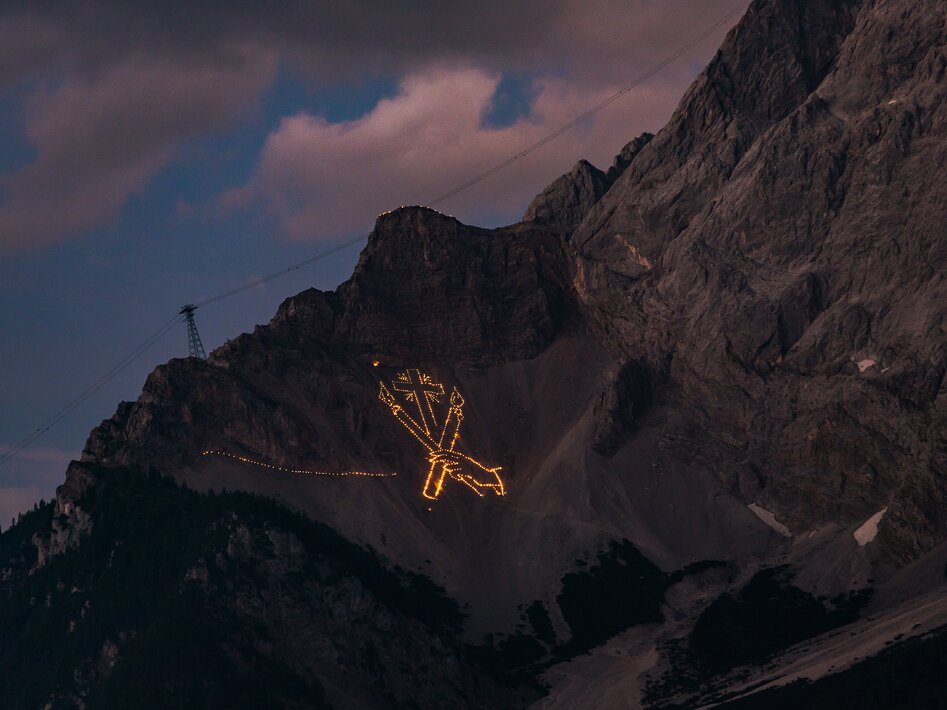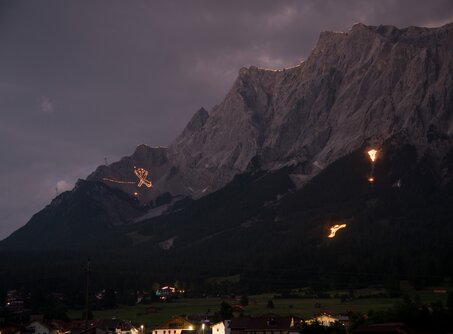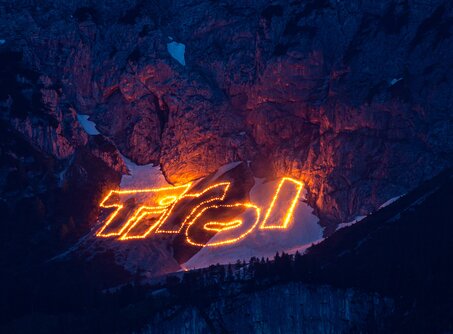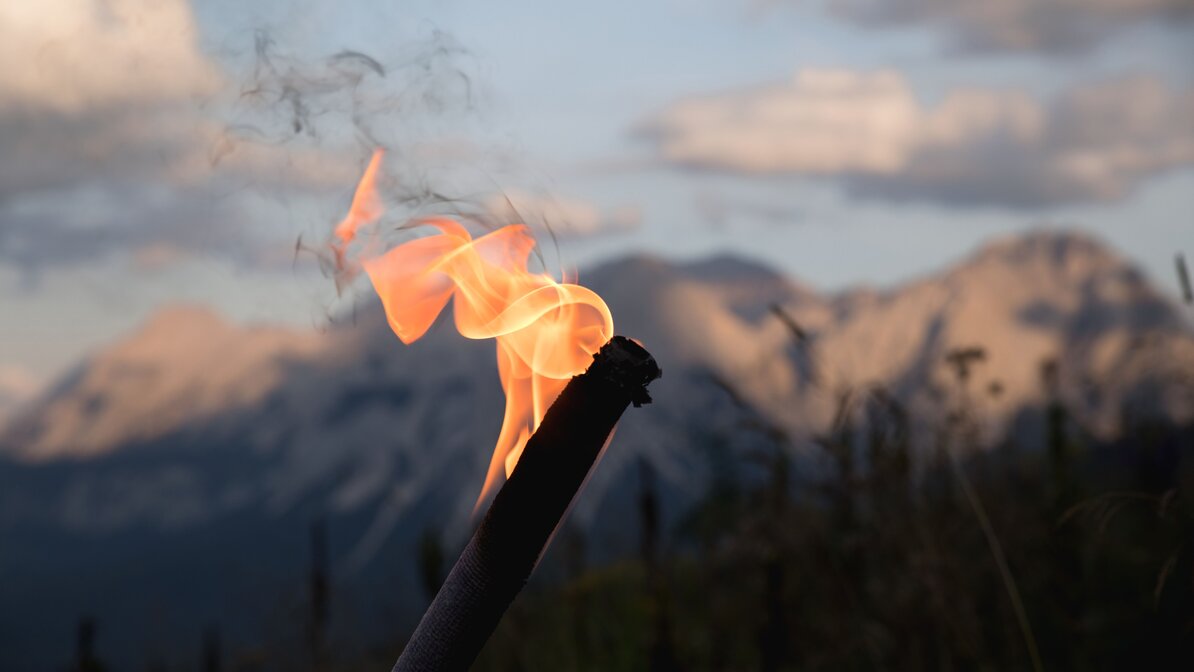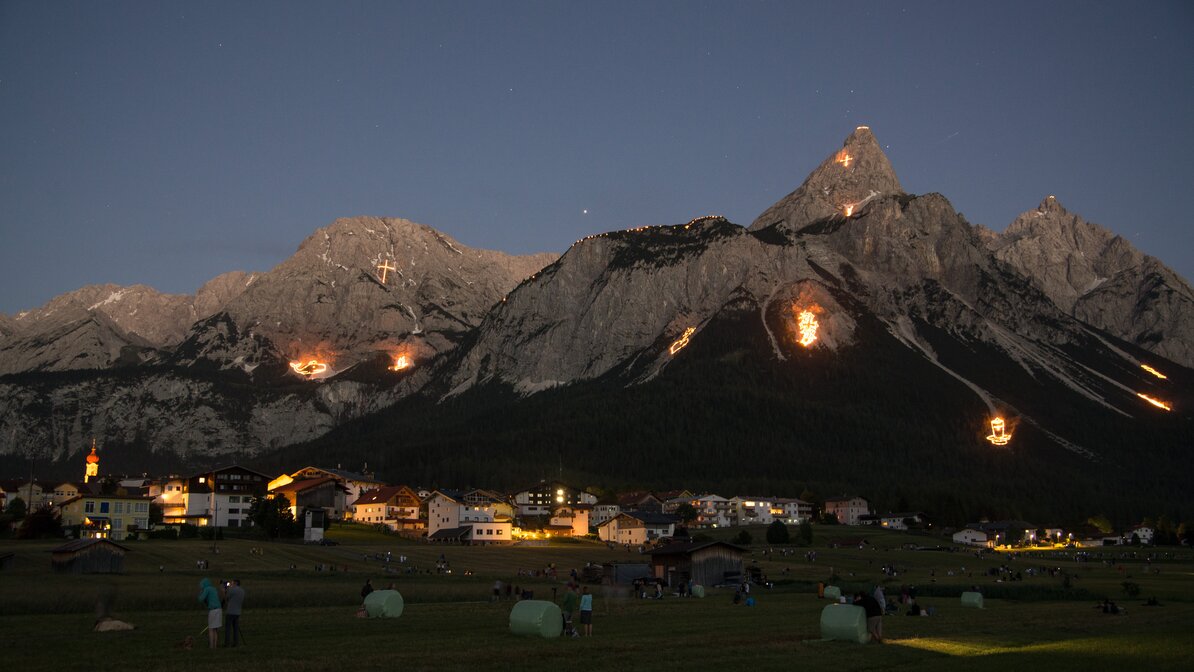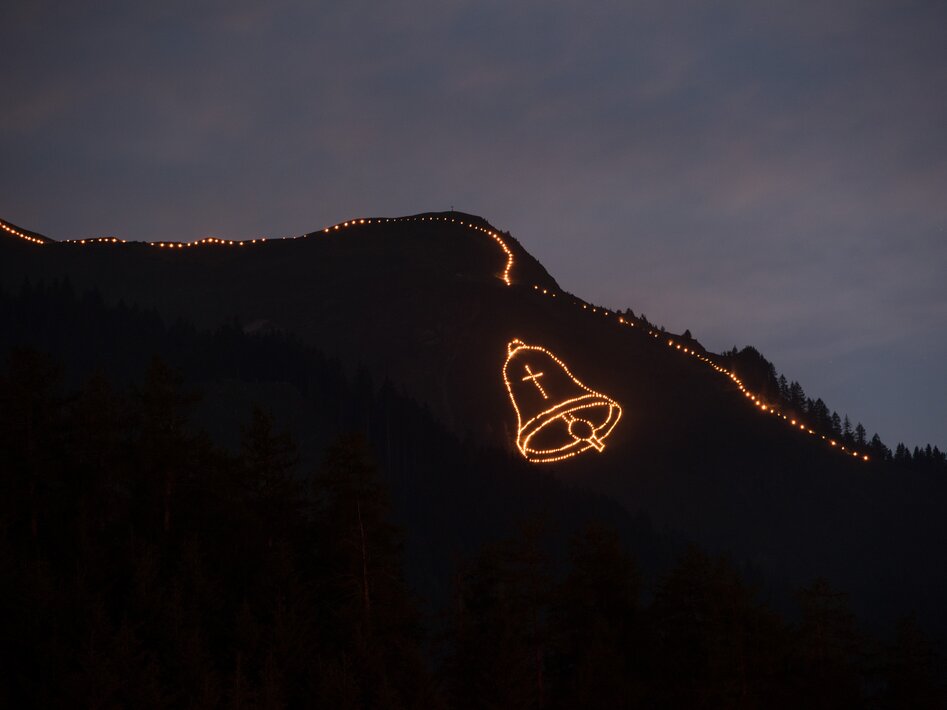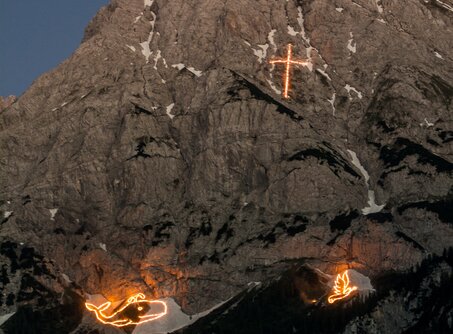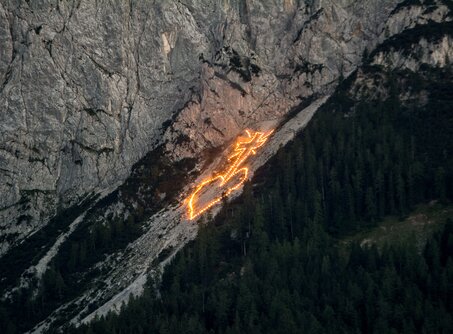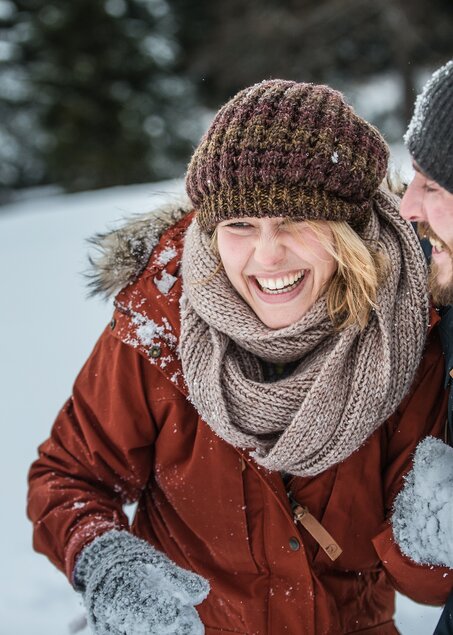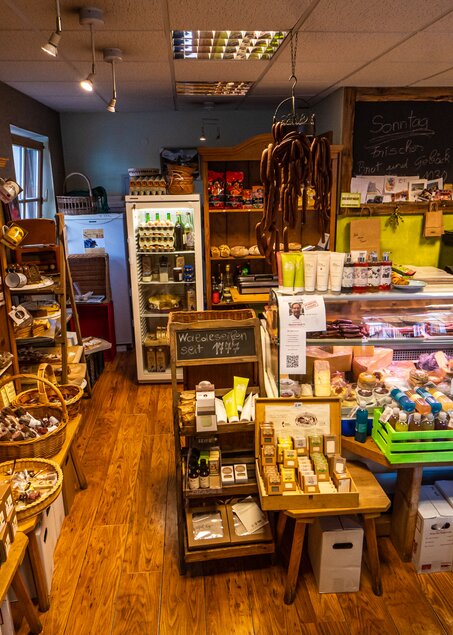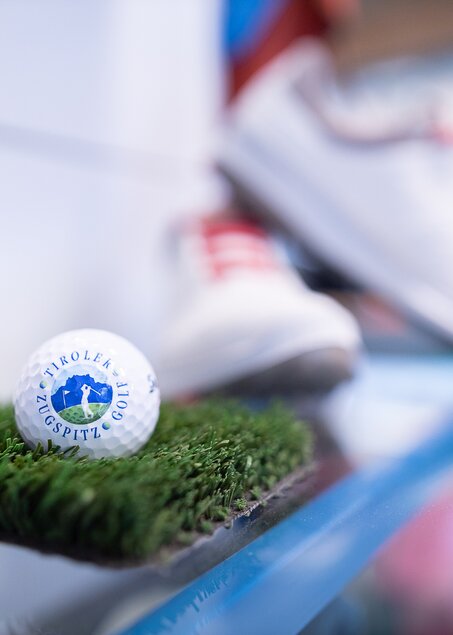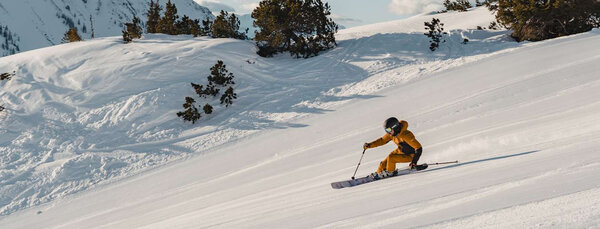Quite an effort. And you also need to be creative: who thinks up and plans the designs?
Christian: Our group has settled into a certain rhythm for the solstice bonfires. This year it’s a Christian design, next year an animal, and the year after that a flower. In the past, for example, we had a rose and a gentian, but also an ibex. When it comes to design, we sit down with our planner Christoph and discuss what we’d like to see. He then draws the image and works out how many bags we’ll need, how big the design will be, and so on. We prepare 30 bags more than he calculates, you know, just in case something breaks.
Preparations are done and it’s the big day. How does that usually go?
Christian: We meet at my place around 7:30 to 8 in the morning and start off with a nice cup of coffee. I quickly pop over to the fire department to find out if the solstice bonfire can go ahead – it depends on if the weather’s good enough. Then we drive our jeeps up to the Wetterstein lift and walk over to our spot. We’ll have a quick breakfast and then start laying out the design at around 9:30. We take a short break for lunch when we’re near the shelter, usually a barbecue, before getting back to work. And when the image is done, we sit down together and enjoy a snack.
How do you know where each bag goes?
Christian: Our designs measure 200 by 50 metres. To make them manageable, we start off with a central axis, which we use as a guide. From there, the design takes shape piece by piece. It can take around five to six hours. When that’s done, we have a barbecue and enjoy a pleasant evening together. There’s time, because the fire isn’t lit until around 10 at night – when it’s dark enough to see clearly from down below. We do this in pairs, one person with the rapeseed oil, the other with the torch. It needs to be quick, so each pair is in charge of their own section of the design. The bags are laid out around one to two metres apart.


